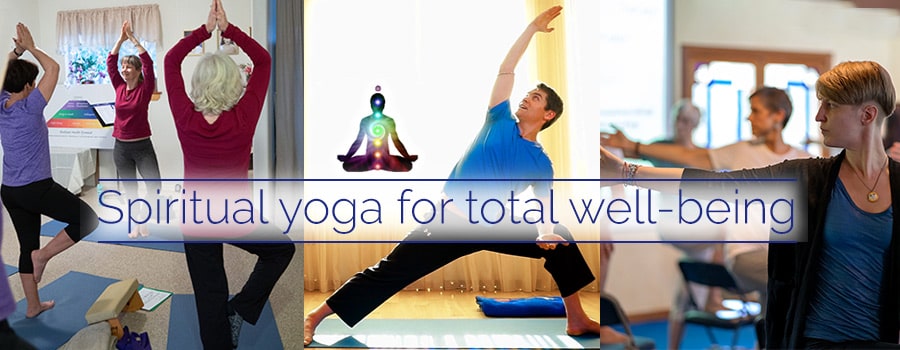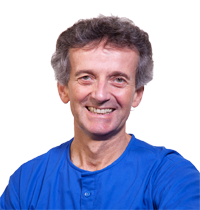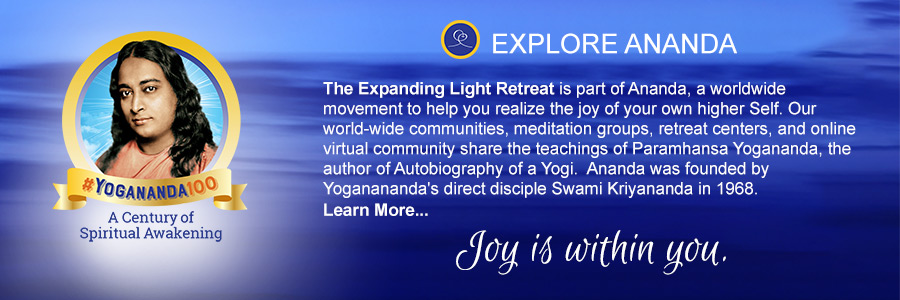|
This article was written for the Ananda Yoga® Teacher Association newsletter. Learn more, or find a certified Ananda Yoga® teacher near you. |
Burn Bright, Not Out
How to Overcome Burnout
In 2002, I interviewed three Ananda Yoga® teachers who teach a lot, and I’ll share their wisdom with you.
Each of them gave a wealth of insights and solutions, including:
- how to recognize the many ways in which burnout can manifest
- finding the causes of burnout
- a wide variety of practical solutions, both preventative and remedial
Even if you don’t have your own studio (as, at time of writing, these three great souls did) or teach as much as they do, I’ll bet you’ll recognize yourself in one or more of their stories. These are all tremendously high-energy people, yet they’ve experienced burnout, so don’t feel like a wimp if burnout strikes.
Just be thankful that there are solutions — and that Fran, Doug and Trina were willing to share their stories and wisdom.
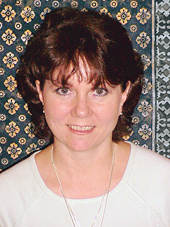
Fran Zabica
When this article was written, Fran taught 12 classes a week at her own studio, Inner Harmony, in San Pedro, California (Los Angeles), which she founded, as well as 3 lunchtime corporate classes.
Believe it or not, that was down from 22 classes a week the fall before when she really hit the wall with burnout.
I kept thinking that soon I would have time to recharge, soon I would have time for me.
Gyandev: How did that happen?
Fran: Last year was the most challenging time of my life. Not only was I teaching and running the studio alone for the most part, but my father became ill and I was the only one who could help. He lived three hours away, and I would drive there every weekend to be with him, and eventually pack him up and move him back to San Pedro.
Little by little I felt my strength ebbing. The “catch 22” is that I had less and less time to do anything about it. I kept thinking that soon I would have time to recharge, soon I would have time for me. Then one morning I awoke to a world without joy and luster. Teaching yoga is my passion, but in that world my passion had become tasteless work.
Gyandev: What did your burnout feel like?
Fran: Moses kept coming to mind. I saw him as a Doorman holding the door open to the Promised Land, calling to everyone to walk through, telling them how beautiful it is, yet spending the rest of his life as a Doorman. That’s how I felt.
To be honest, I felt that God had played a really mean trick on me, and I was a little angry. But even through the darkest moments, I knew that teaching was my passion, and I began to realize that it was not the situation, but my thinking that was the problem.
I would hear Yogananda whispering — sometimes yelling — in my ear, “God First! All else can wait.” And I’d yell right back, “Can my dad wait!? Can the students wait!? Can the bank wait!?”, but deep down knowing that he was right. I was teaching on the memory of what it used to be like when I was really connected with God, hoping that that would be enough to inspire the students. I began to feel like an impostor, a mere shadow of my former self.
Gyandev: How did you try to change it around?
Fran: At first I thought if just I talked about it, someone would give me the answer (even though I already had it). So I would talk about what I was not doing and how it used to be when I was doing it (i.e., personal practice: meditation).
The more I talked, the worse it got. Here I was spending a lot of time and energy feeling bad and complaining about how I had no time to spend on myself and my personal practice. Fortunately I was able to see that the joke was on me, and that in itself lifted me a bit.
So talking about what you’re not doing doesn’t help. Unfortunately, chocolate, french fries and ice cream don’t help either. TV is the least help of all!
Gyandev: What did help?
Fran: I knew that meditation was the answer, but I still had that Moses Complex. I thought that if I started really meditating again, I would just be given more work to do. So I set about the task of “fixing” my world through my own efforts. The more time I freed up, the more the time got filled. The more I tried to simplify, the more complicated my life got. I began to feel like a fish out of water, flopping wildly and gasping for breath.
Then Yogananda’s voice would come again: “Dive deep!” And I would say, “But I’m too exhausted and confused to find the ocean, Yogananda. Please send help!” Voilá! Help arrived in the form of two students.
The first was a Japanese woman who had just moved into the area and found me in the yellow pages. She really liked the spiritual focus of the class and started coming several times a week. She told me about her husband, the CEO of something or other, that he was really stressed out, and that she planned to bring him to class the next time he was in town.
I took the books with me to bed and boy, was I embarrassed! [The CEO] had been a Zen Buddhist priest for many years.
A few weeks later they both came to class. He sat right in front of me, straight as an arrow and became completely still. Pretty unusual for a stressed out businessman, I thought. A few weeks later they came for another class, but this time I had a substitute teacher because my knee was swollen, my back was out, and my shoulder was pretty torn. (Did I mention that a pretty clear sign of burnout is physical injuries?) After the class I came out of my office to speak with them. He handed me some books, we exchanged a few words, and I went home.
I took the books with me to bed and boy, was I embarrassed! That “something or other” that he was CEO of was the University of Science and Philosophy, based on the work of Walter Russell. He had also been a Zen Buddhist priest for many years. No doubt his wife told me all this, but it just didn’t get through the static at the time. Just as well, because I would have been too freaked out to teach him. Sometimes, maya is good.
One of his booklets, “Awakening the Genius Within,” particularly helped clear the static. In my own words, here is the message I got: “I am not Moses! It is not my job to change or save anybody. My only purpose is to go deep in meditation, to touch that special light that is mine, to come back out and let that light shine. Through my inspiration, others will be inspired to seek their own source and come back out and shine in their own unique way. Each time that happens, the world has more light.”
Boy, did I feel lighter! I know that’s what Yogananda and all the other masters say, but I had too many old tapes playing at once, and all their words started being filtered through duty, obligation, burden, etc. I needed to hear it in a new way.
Gyandev: What else helped?
Fran: I mentioned my old tapes — it’s bad enough when one or two play, but when they’re all playing at once, it can get pretty scary. That’s when affirmations, japa or chanting really help. In my case I needed all three at once.
Trying to stop thinking a thought only makes the thought bigger. So I found a chant that was also an affirmation and chanted it continuously until it became japa. The affirmation and the vibration flowing through me for long periods of time weakened the hold of the old tapes. Energy started to have space in which to rise.
All the techniques — pranayama, asana, affirmation, visualization, deep relaxation, etc. — are so valuable, like rungs in a ladder. Each one gives you a firm place to step as you move closer to the source of strength that is found only in meditation. Sometimes you find yourself clinging rather than climbing, and it is those times when you send out a call, “Yogananda, I’m too tired and confused. Please, send help.”
Gyandev: Any new inspirations from your revitalized sadhana?
Fran: Oh yes! I feel a real transformation coming on. Everywhere I look I see Hatha Yoga. Today when I got on-line, the MSN home page had someone in shoulderstand (no blanket, head completely turned, looking at the camera!) with the caption, “Check out the hottest new fitness trends from yoga to boku ball.”
Well, I am a Yoga Teacher, not a postures instructor. I make that very clear to all my students and all those who inquire. But I’m starting to feel like I’m locked in a closet, and I want out.
Jyotish Novak (Ananda’s Spiritual Director) inspired me with his new Meditation Therapy videos. I feel the Meditation Therapist emerging from the heart of the Yoga Teacher. Perhaps soon my students will believe me when I tell them that, whether they know it or not, they really came to learn to meditate, not pretzel-ate.
As the affirmation for Vajrasana (Firm Pose) says, “In stillness, I touch my inner strength.”
Doug Andrews
I knew that either he would be a great source of advice on this topic, or else he was in desperate need of advice.
When I called Doug, he had just taught a 9:00 a.m. class, followed by two private lessons, then a few hours at “work,” followed by two evening clasess. (He teaches at Ananda Sangha of the Redwoods.)
Given that this was not an utterly unusual day for Doug, I knew that either he would be a great source of advice on this topic, or else he was in desperate need of advice.
In fact, it was the former.
Gyandev: Have you ever been burned out as a yoga teacher?
Doug: Not from yoga, but certainly from the sheer crunch of everything in my life put together. In fact, the yoga teaching has been a real blessing for me.
However, as I began to teach more and more classes, I realized that burnout can also come in the form of becoming mechanical, flat, stale — where you’re not feeling what you’re doing, so you’re simply repeating words that you’ve said before. Not good for the teacher or the students.
Gyandev: What do you do to prevent that?
Doug: One thing that has really helped me is to teach a variety of levels of classes. Teaching lots of different levels requires that you not be saying the same thing in every class. You not only teach different poses, but you teach the same pose in different ways to different groups. That means you have to stay awake, and when you’re awake, everything is more fun and interesting.
Also, giving private classes has been real important for me because it makes you focus on a single person with perhaps a complex set of needs. You have to address his/her needs and limitations in a very specific way that you’d just never do in a regular class because it’s far too detailed. It requires that you ask questions, explore the situation, almost become that person to a certain extent.
Gyandev: What about your personal practice?
… the important thing is to focus on a particular ray of the Divine so you can zoom in on its uplifting vibrations.
I think that many teachers miss this point.
Doug: Maintaining my own yoga practice has been crucial. My main emphasis is always on Kriya Yoga, but of course I also do postures. I’ve found that the more I cultivate my attunement with Yogananda, the less chance there is of being burned out, because it’s not me doing the teaching; rather it’s him teaching through me.
Certainly the same thing could be true for others who are not disciples of Yogananda, because the important thing is to focus on a particular ray of the Divine so you can zoom in on its uplifting vibrations. I think that many teachers miss this point.
Gyandev: Do yoga classes put a squeeze on your personal practice?
Doug: They certainly can, but I’ve made it a priority because I realize it’s so important. Sometimes that takes creativity.
For example, we now offer early morning “commuter classes.” (Many locals commute to Santa Cruz or Silicon Valley.) It takes six months to build a successful class, so I wasn’t surprised that the initial turnout was low. Still, it was impacting my sadhana, and I wondered whether it was worth it. (It certainly wasn’t worth it financially — not yet, anyway.) So I turned it into a “sadhana class,” with Energization, postures, chant, and at least a 15- minute meditation.
Now there’s no struggle; it’s not pulling away so much from my own sadhana.
After the class, I did the rest of my meditation. Now there’s no struggle; it’s not pulling away so much from my own sadhana. And if no one shows up, well, I’m doing exactly what I’d be doing anyway. So until the class grows and evolves into something else, it’s sadhana, which is great. I could get carried away and turn this into just my own sadhana, neglecting the students, so I have to be careful there, but so far it’s working.
Another example: One of my classes has people who have been with me for a long time. It’s more a mutual exploration of asanas than me teaching them. We work on developing the strength, flexibility or awareness to do new poses.
That gives me a chance to do yoga myself, and to expand my own practice as well as my teaching. Sometimes we don’t give ourselves the time to develop new things in our own practice because it’s so hard just to find time for what we already know. This can make for a stale practice. Of course, I can’t get lost in my own practice in this class — I still need to be there primarily for the students.
Gyandev: What else do you do to stay fresh?
Doug: You can’t let inertia get you. You need to continue to study yoga philosophy even if your life is getting crunched, time-wise. It deepens your practice and opens up new dimensions of understanding.
And of course, the occasional — or better still, regular — retreat experience is absolutely vital.
The weakest area of most yoga teachers is philosophy, but if we take the time to explore that more, it gives us a broader base of knowledge so that if other people come with past exposure to other yoga traditions, we will know where they’re coming from and how help them come to an understanding of what Ananda Yoga® is all about. And isn’t that what we’re here for?
Being open to new directions is also a big one. For me, the thrill these days comes primarily from walking people through the path itself, with meditation as the emphasis. Hatha Yoga is more a means of drawing people into that, and for me, it’s tremendously rewarding when the light bulb comes on and they begin to get the bigger picture.Then the asanas, too, become even more fun.
And of course, the occasional — or better still, regular — retreat experience is absolutely vital. I haven’t been getting enough of that lately, but I know from my own experience that it’s crucial. I simply have to recharge my batteries.
It’s attitudinal, too. Some yoga teachers are so serious, and that’s good in a way, but we have to keep in mind that the practice is about being joyful. We can’t afford to lose that. We need to do whatever it takes to maintain that joy. When the joy disappears for the teacher, it disappears for the students, too — and that’s a drag.
If you’re not having fun, then it’s no different from anything else in our lives: it feels like a job, and it simply won’t work.
In mid-2007, Ananda Sangha of the Redwoods opened a second center, this time in Scotts Valley, a short drive from Boulder Creek. Looks like Doug will have even more opportunities to practice his anti-burnout regime.
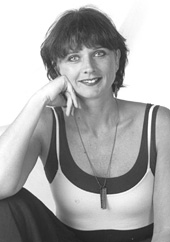
Trina Ford
Trina owns and operates a studio in Augusta, South Carolina, teaching yoga and doing bodywork.
When I called her, one of her regular staff was taking Ananda Yoga Teacher Training, two others were on leave for personal reasons, and one massage therapist had just resigned.
When I called her, one of her regular staff teachers was at The Expanding Light taking Ananda Yoga Teacher Training, two others were on leave for personal reasons, and one massage therapist had just resigned. So burnout was definitely in the air.
Gyandev: Have you ever been burned out from teaching yoga?
Trina: Oh yes. Right now, in fact, partly because of the intensity of my whole life, but also because we’ve added a lot more classes and teachers, and three of the teachers are on leave. This happens, of course, and I always have to be prepared to take up the slack.
It’s happened before. When I began teaching, it was mainly just to have folks to practice with, to have fun. Then people started asking me to teach here and there, plus I was doing massage and working full time. I got spread a bit thin, but I managed.
When I opened my own center in 1999, I thought that would give me a break because everything would be under the same roof. Less travel, no sweat. And it did work for a while — I was teaching nine classes a week plus doing massage therapy — but then the studio started growing (which of course it needed to do for financial reasons).
We needed more class time, because we could only fit 16 people at a time. I had no one to help me, so it was a bittersweet experience of seeing it grow, but grow too much for me to handle. I began to burn out.
Gyandev: How did the burnout manifest?
Trina: Mainly exhaustion and stress. I was fine while I was in class, but what got me was the thought each day of what I would have to do that day: four therapies, four yoga classes, a 12-hour day.
I thought, “Won’t all this please go away?” And I wanted to do other things too, like teach meditation. But of course you don’t want to quit something you love. And the center needed income.
Gyandev: What was your solution for burnout?
What’s helped me the most is affirmations.
Every morning, I pick an affirmation from Swami Kriyananda’s Affirmations for Self-Healing, one that seems right for the way I’m feeling.
Trina: A big part of it was adding more teachers, although it added new kinds of stress: working with others, being a boss, and all the administrative things that go along with that. I’d never done that before, and I’m still learning. I think of myself as a yogi and a massage therapist, but all that other stuff came with it. The operation has become smoother with experience, of course.
Also vital has been my own meditation and yoga practice, and making sure I stay healthy. But what’s helped me the most is affirmations. Every morning, I pick an affirmation from Swami Kriyananda’s Affirmations for Self-Healing (www.crystalclarity.com), one that seems right for the way I’m feeling.
If I’m a little down, for example, I’ll pick one on joy, write it down, and keep it going all day. Later, if I start getting a negative thought — I’m sad, or overburdened, or tired — I go back to the affirmation. If a feeling comes up that doesn’t relate closely enough to that affirmation, I simply make up my own short, sweet affirmation to turn it around. For example, if my affirmation was for joy, but all of sudden I’m worrying about money, I might affirm, “This is God’s work. He will provide.”
I’m also very prayerful all day long: speaking to God, asking for guidance in everything. Where is the money going to come from? Where are the teachers going to come from?
Before making a decision, I ask for guidance and decide based on whatever comes. I think Yogananda or Swami Kriyananda said, “The only bad decision is a decision not made.” And there’s an old rabbi’s saying, “Pray with your feet moving.” That’s how I do things, and I feel I’m really supported.
Anything I have now, I know has been given to me for God’s work, and that’s the big thing that gets me through the tough spots. Constant partnership with God rather than everything being on my shoulders. In fact, I’ve seen that it’s really only when I feel that everything’s on my shoulders that burnout happens.
Gyandev: What other things have helped?
Trina: Support from my family in it being okay that I’m working so much, especially with all my night classes. I’m gone a lot of the day, and since I have a young daughter, I need the support from both her and my husband. They give it.
I think that many people, especially women, have a tendency to want to be everything to everyone: perfect mom, perfect wife, perfect yoga teacher, perfect business person, perfect boss, perfect massage therapist. We want to please everyone. We can’t do it, of course, and when we try too hard, we burn out.
For example, I recently had to increase my prices, and one woman complained. I explained that we had to be able to pay the higher quality teachers that we now have. You have to do what you have to do. If you try to please everyone, it won’t work. So I keep going back to: What’s in the highest interest of everyone? If what you’re doing leads to a burned out owner and/ or burned out teachers, that’s not in the highest interest of anyone.
Gyandev: So now it’s all a piece of cake, right?
Trina: R-i-i-i-ight. We now have 17 classes, and although I usually teach only a small number of those, I still do bodywork, manage the center, and give private lessons. I still need to go to classes and see what’s happening or adjust people. I still need to evaluate my seven wonderful teachers, give them feedback.
I’ve realized that sometimes I simply have to let go of some things in order to preserve my own sanity.
As director, I have to make sure that the students are getting what I want them to get. That can have its challenges. I want teachers to have the space to grow, and I realize there are different ways of doing things, but I need to be clear in what I’d like done. For a person like me, that can be stressful.
I’ve realized that sometimes I simply have to let go of some things in order to preserve my own sanity. I have my own way of doing things, and part of my process has been to be able to let go a little bit without stepping out of directing teachers in the way I need to do it.
I couldn’t do all this without staying tapped in to the teachings and to God, and putting that first. That’s where I am now. I’m still growing, and our studio is still growing. That doesn’t mean that stress won’t happen, but I know that what really matters is how I respond to whatever does happen.
Not long ago, Trina sold her studio in order to focus more on private yoga practice, yoga therapy and massage sessions, rather than the many complications of running a business. She loves her new life.
Related Articles
All authors are graduates of Ananda Yoga Teacher Training.



